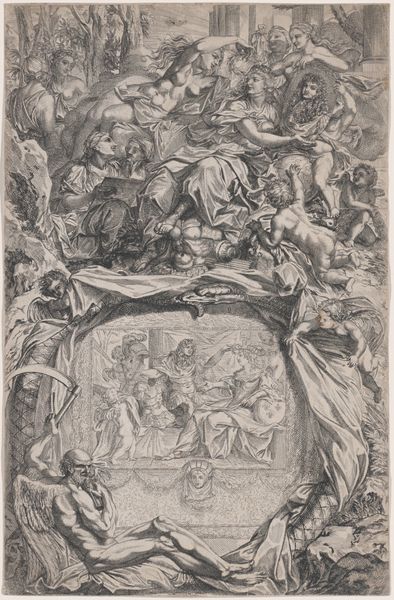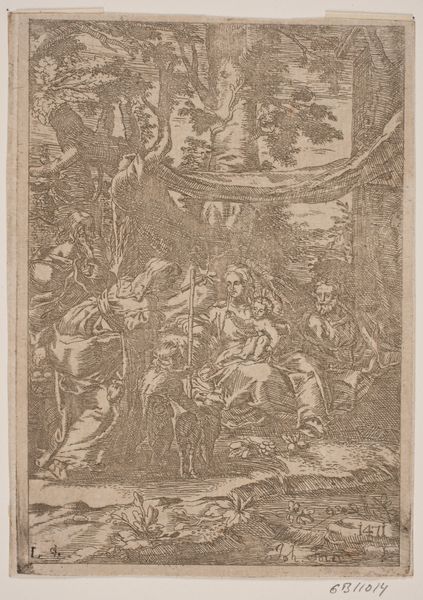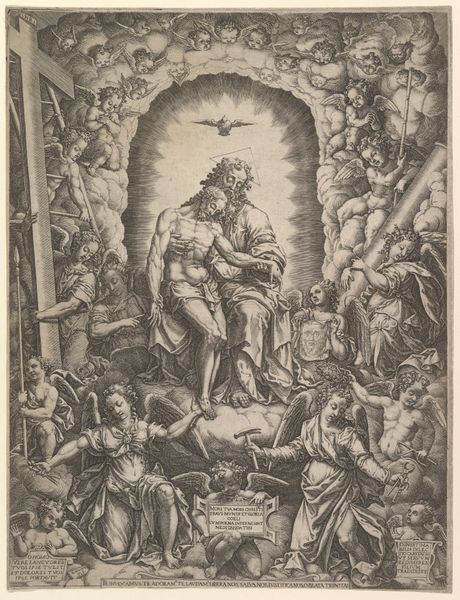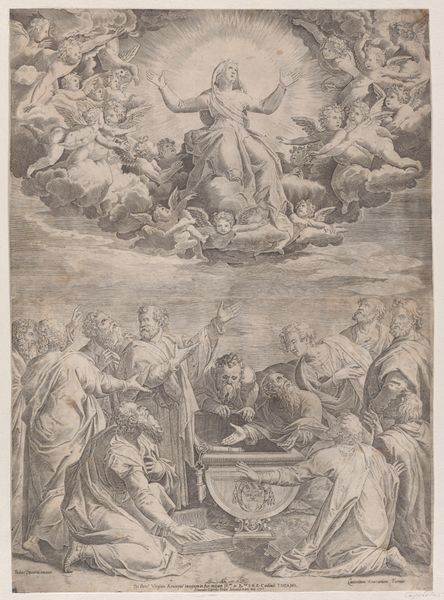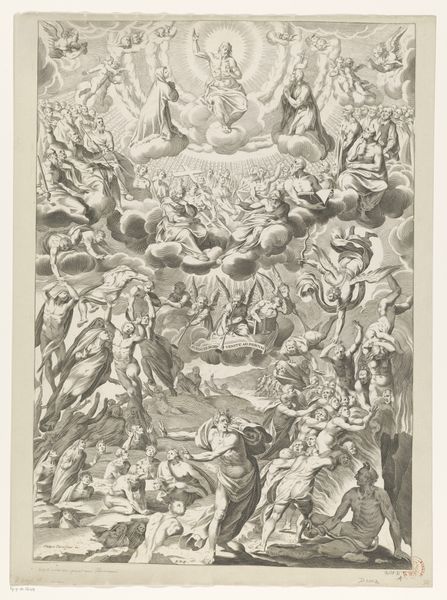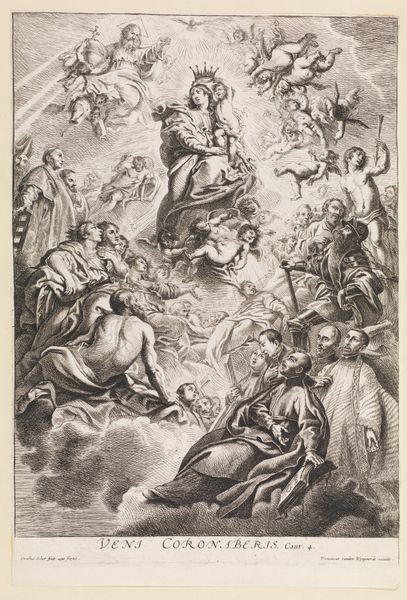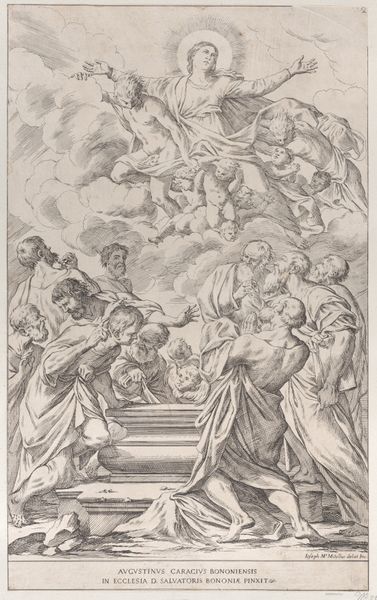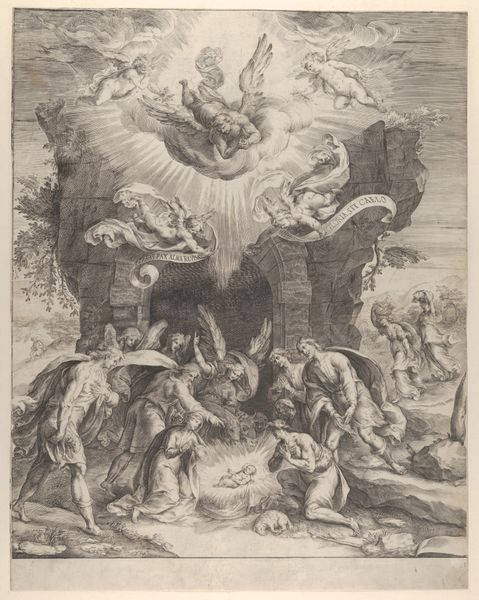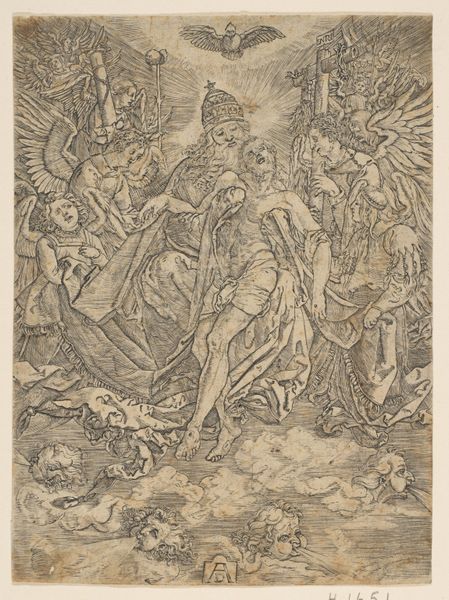
drawing, print, ink, engraving
#
drawing
#
ink drawing
#
pen drawing
# print
#
mannerism
#
figuration
#
ink
#
line
#
history-painting
#
engraving
Copyright: Public Domain
Curator: This intricate engraving is titled "The Adoration of the Trinity," created by Cornelis Cort in 1566. Editor: My first impression is one of overwhelming drama. The scene is incredibly busy, filled with figures swirling around, bathed in divine light. Curator: Cort, a renowned Dutch printmaker, was deeply influenced by the Mannerist style during his time in Italy. You see that elongated figuration and dramatic use of space characteristic of the period. He expertly translates the crowded compositions from painting to print. Editor: Absolutely. But it is more than just skillful reproduction. The central grouping—God the Father, Christ, and the Holy Spirit represented by a dove—emanates such patriarchal power, casting long rays upon this assembly of earthly figures. Look at them, straining, almost fighting, for connection. What does this dynamic suggest about the social hierarchy implied in religious authority? Curator: Consider that printmaking at this time was vital for disseminating religious ideas. Prints like this, with their broad appeal, circulated theological concepts and reinforced Catholic doctrine. Editor: And considering the historical context—1566—Europe was deeply divided by religious wars and the Reformation. Doesn't the scene then become a plea for unity and obedience? It implicitly reinforces the importance of hierarchical faith as social structure amid profound societal upheaval. Curator: The choice to create an engraving rather than, say, a woodcut, gives the work this immense precision and detail. Cort could render the figures with a lifelike quality which would underscore the importance of understanding Biblical narrative literally. Editor: But I wonder who the work would have been made to impress. What exactly, even beyond disseminating a certain social ideal, was the intent, what did the system producing and selling religious iconography *do*? Curator: Certainly, works such as "The Adoration of the Trinity" tell stories of power, artistry, and the intersection of religion and society during a turbulent period in European history. Editor: I agree. Looking closer really forces us to contend with its potential impacts and the difficult questions the image provokes for a contemporary audience.
Comments
No comments
Be the first to comment and join the conversation on the ultimate creative platform.
